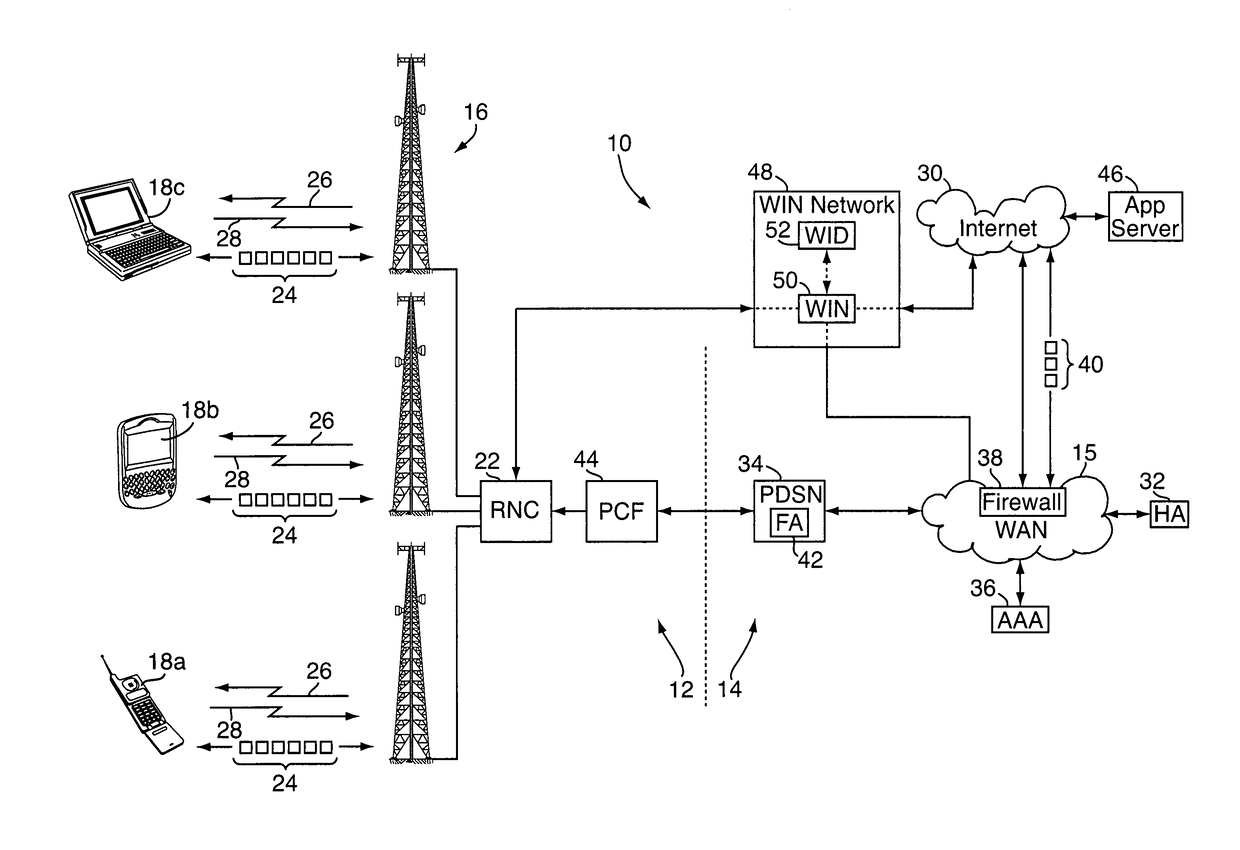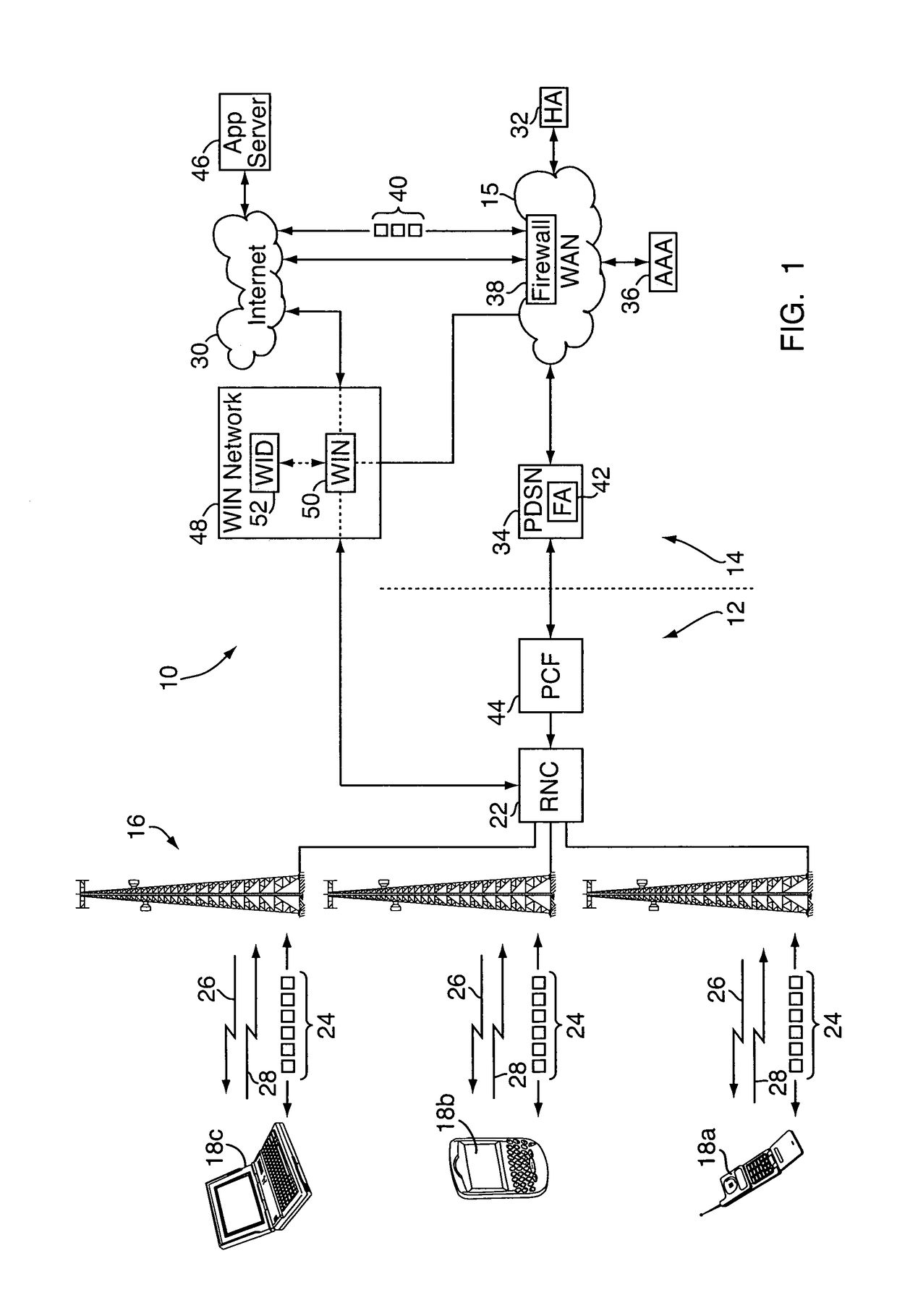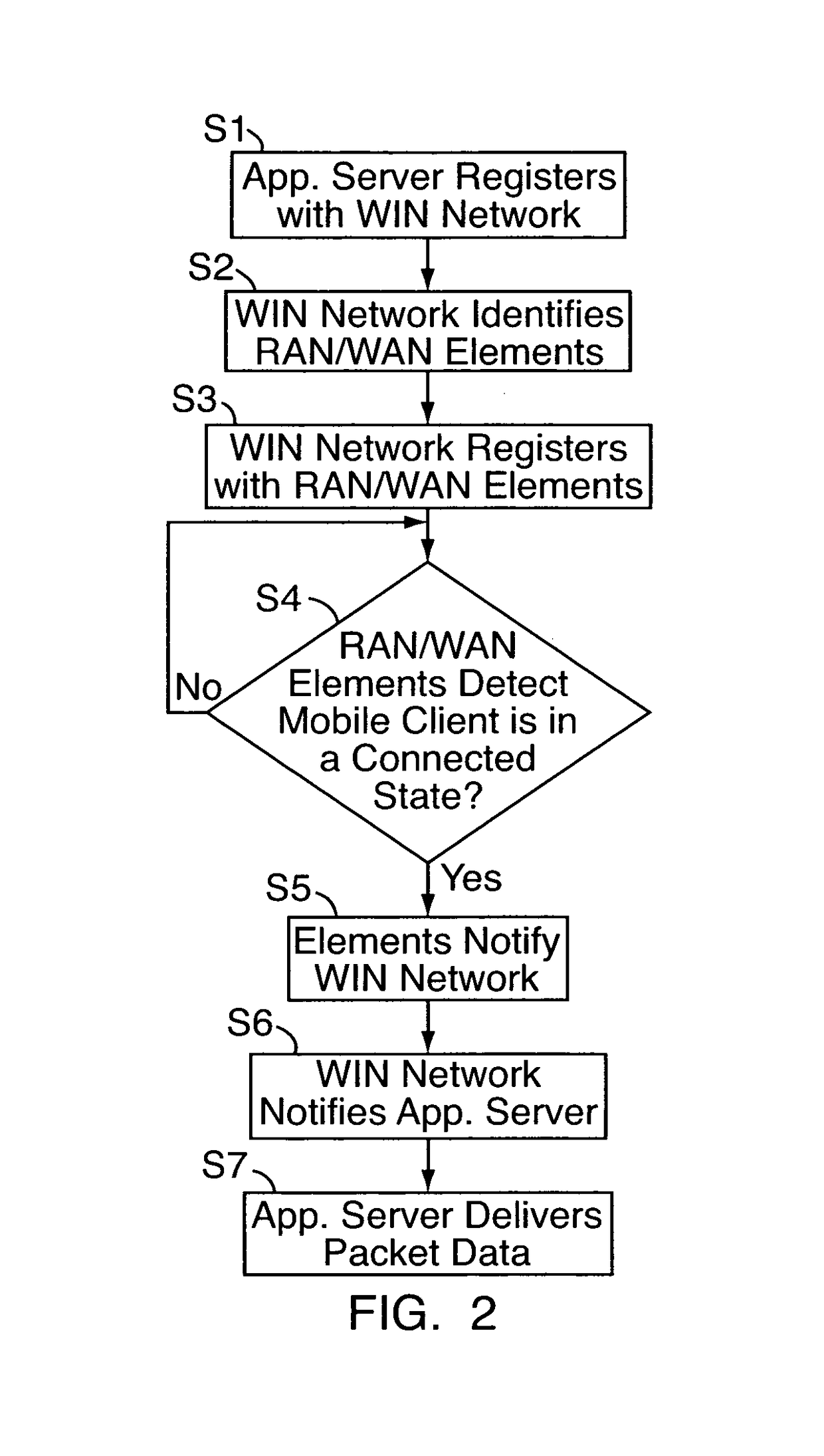Method and system for opportunistic delivery of less-than-best-effort application data over communication networks
a communication network and application data technology, applied in the field of communication, can solve problems such as the difficulty of the ran itself to inspect the data packets flowing through, and achieve the effect of reducing the overload of network resources
- Summary
- Abstract
- Description
- Claims
- Application Information
AI Technical Summary
Benefits of technology
Problems solved by technology
Method used
Image
Examples
Embodiment Construction
[0024]With reference to FIG. 1, an embodiment of a method and apparatus for opportunistic delivery of less-than-best-effort application data are implemented on or as part of a wireless communication network 10, e.g., a CDMA-based 1×-EVDO network or other wireless network. The wireless network 10 may include a radio access network (“RAN”) portion 12 and a core IP (Internet Protocol) portion 14, which contains a carrier wide area network (“WAN”) 15. Although for simplicity, the WAN 15 is shown connected to a single RAN portion 12, it should be understood that multiple RAN portions 12 would be implemented to provide large wireless network coverage area. The RAN portion 12 includes one or more fixed base stations 16, each with various transceivers and antennae for wireless radio communications with a number of distributed wireless mobile clients 18a-18c, e.g., mobile phones, “3-G” (third generation) wireless devices, wireless computers, and the like. The base stations 16 are in turn con...
PUM
 Login to View More
Login to View More Abstract
Description
Claims
Application Information
 Login to View More
Login to View More - R&D
- Intellectual Property
- Life Sciences
- Materials
- Tech Scout
- Unparalleled Data Quality
- Higher Quality Content
- 60% Fewer Hallucinations
Browse by: Latest US Patents, China's latest patents, Technical Efficacy Thesaurus, Application Domain, Technology Topic, Popular Technical Reports.
© 2025 PatSnap. All rights reserved.Legal|Privacy policy|Modern Slavery Act Transparency Statement|Sitemap|About US| Contact US: help@patsnap.com



